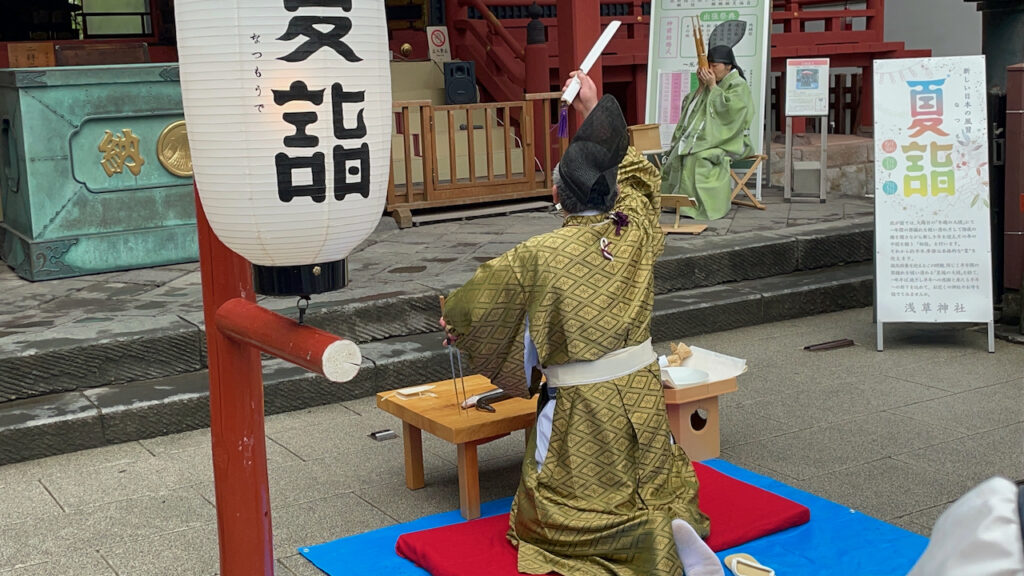Last week, I volunteered at Asakusa Jinja’s Natsumoude event. I did this last year as well, and last year I was able to attend a special matsuri at a well in the jinja precincts. This year, I was able to watch the Hōchō Shiki.
This is a ceremony in which a fish is prepared for the kami without the chef touching the fish with his hands even once. Instead, it is manipulated with long chopsticks and the knife.

This event was clearly ceremonial — it was held outside the prayer hall of the jinja, where it was easy for people to see it, and involved a lot of waving the knife around over the chef’s head. (So much so that he knocked his own hat off at one point, and one of the people attending had to put it back on for him. The chef did not miss a beat of the ceremony while that happened.) After the fish (eel, in this case) had been prepared, it was taken inside the prayer hall, and formally offered to the kami.
I had never seen such a ceremony before, although I had heard of them, so that was interesting.
A point of broader theological interest concerns kegarë, or impurity. It is often stated that blood is a source of kegarë in Shinto, and traditionally that is certainly true. However, chopping a fish up does involve some blood, and this ceremony was performed in front of the kami. (Granted, outside the prayer hall, which may have been significant, but last year’s well ceremony was also performed outside the prayer hall. It might have been simply to make the ceremony visible to visitors.)
As with most things in Shinto, the question of impurity is a lot more complex than one might initially think.
Are there any other rituals or practices that you know of that involve the preparation or sacrifice of animals as offerings to kami? In ancient western pagan religions the sacrifice of animals for the gods is quite common, so I’m wondering how widespread similar practices are in Shinto.
Also, I’m wondering if blood *in the context of an offering to the kami* is thought of differently within the internal logic of Shinto theology than blood on the persons of people coming to the temple.
Offerings of fish are very common at larger matsuri, although preparing them in front of the kami is not. Birds are less common, but not remarkable. Offerings of mammals are rare, but there are a handful of matsuri that include them, and those matsuri seem to be old. There is a suspicion among scholars that this is the result of the influence of Buddhism.
As for the second point, I’m not sure that Shinto theology can be described as having an internal (or external) logic. It isn’t that well defined, or uniform. There is likely to be an influence from the ritual aspects, but I don’t think that anything general or straightforward can be said about it.
“As with most things in Shinto, the question of impurity is a lot more complex than one might initially think.”
While the humans aren’t going to eat it, there is such a thing as Kosher for Passover pet food; https://feedbagpetsupply.com/2213-2/ . . . . . .